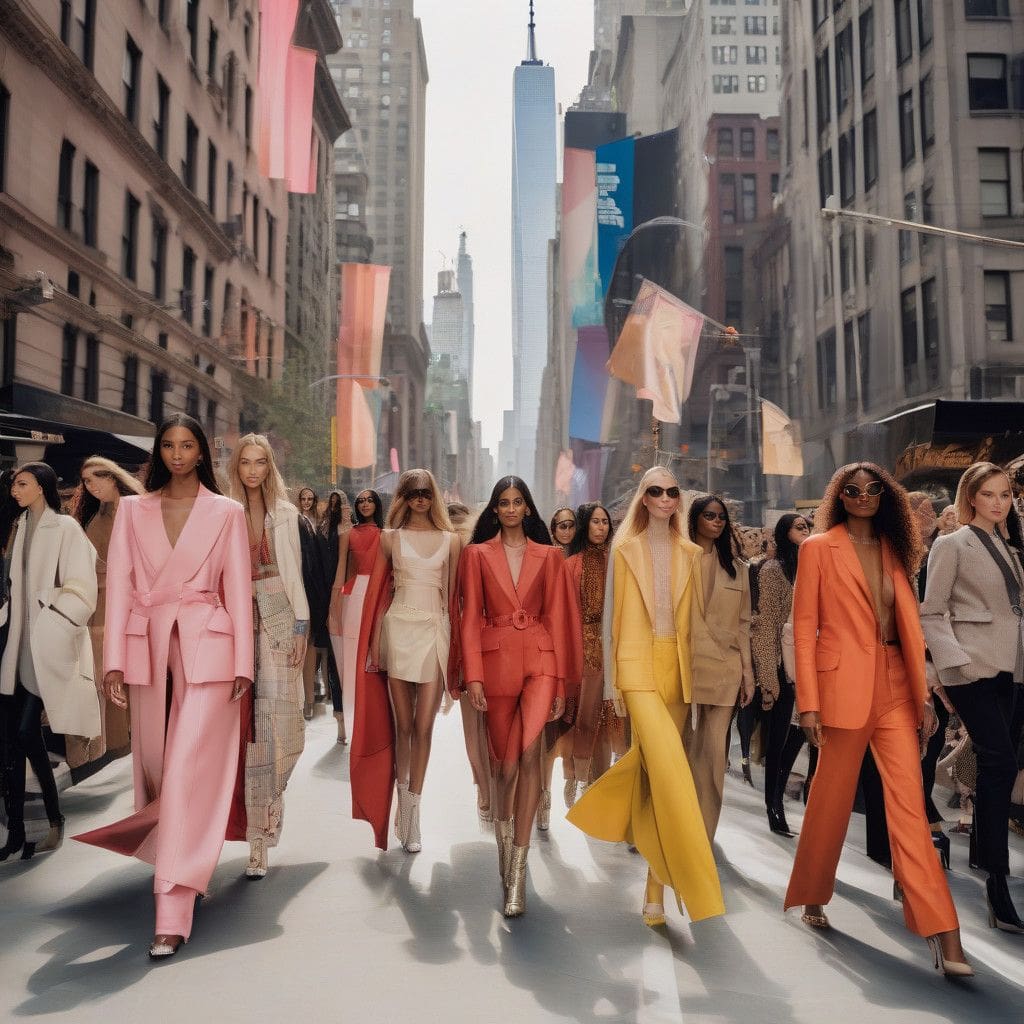The recent New York Fashion Week has sparked a renewed debate around its relevance, as critics often announce its impending demise. However, the vibrant displays and high-profile events of this season suggest that the famed fashion spectacle is very much alive.
Many designers previously considered pivotal to the NYFW allure, such as Peter Do, the Row, and Gabriela Hearst, have shifted their focus to Paris. Traditional brands like Oscar de la Renta and Marc Jacobs are opting for off-calendar presentations. Complicated logistics and venues on the outskirts of Manhattan, notably in areas like the Brooklyn Navy Yard, present challenges to seamless access, prompting the fashion community to navigate a cumbersome series of events throughout the week.
These issues were highlighted in a report by McKinsey and the Partnership for New York City, which indicated a “deflation of NYFW on the world stage.” This perception grew due to scattered venues and rising costs to present runway shows. Nevertheless, the recent fashion week provided plenty of evidence opposing this narrative, with spectacles that felt extravagant and engaging.
Ralph Lauren’s equestrian showcase in Bridgehampton set the tone for a spectacular season, offering a one-night-only recreation of his famed Polo Bar restaurant, elevating the event into something memorable. Additionally, a surprise performance from the Wu-Tang Clan on a decommissioned Staten Island ferry organized by Tommy Hilfiger showcased the creativity and flair still prevalent in the New York fashion scene. It wasn’t just the usual suspects that participated. Marquee shows from luxury brands like Alaïa and Off-White, which normally showcase in Paris, demonstrated the United States’ continued significance in the fashion conversation.
Emerging designers added their personal touch to the festivities, showcasing the diversity and innovation that New York is known for. The indie brand Eckhaus Latta, for instance, threw a rambunctious dinner party that doubled as a runway. Designer Willy Chavarria made a political statement with an ode to democracy on the runway. Renowned brands added commercial depth to their presentations, with Coach displaying a wide array of handbags—from oversized backpacks to whimsical doodle-covered styles—while Tory Burch resurrected the Reva flat, a staple that generated significant success for the brand in the late 2000s.
Beyond the runway shows, an energetic atmosphere permeated the city, filled with events that interested various fashion segments. Florentine retailer LuisaViaRoma introduced its first international outpost with a grand launch party. The day following, J.Crew recreated the iconic New York restaurant La Côte Basque in the basement of the New York Public Library, demonstrating a celebratory spirit that invigorated the event week.
Industry influencers and established brands organized star-studded dinners through the week, expressing a collaborative essence amongst key players. Rival influencer monetization companies ShopMy and LTK hosted their events, with LTK celebrating its first gathering since the onset of the pandemic. This lively atmosphere contributed to a sense of community not felt in previous years—a sentiment echoed by fashion writer Rachel Tashjian. Attendees expressed that the vibe was more sociable and enjoyable compared to previous iterations, marked by a shared appreciation for fashion and creativity.
Behind the scenes, significant logistical improvements made this year’s experience notably smoother. Addressing complaints about transportation between events, the Council of Fashion Designers of America collaborated with Google to provide a shuttle service that made traversing the city much easier for attendees. For the first time in years, most shows adhered closely to their scheduled timings, with minimal delays, maximizing participation and engagement.
However, this season was not without its issues. The overwhelming star power often overshadowed the actual clothing, demonstrating how celebrity influence can dominate discussions. The presence of big names like Rihanna at the Alaïa show was a spectacle in itself, but it came with the drawback of overshadowing the emerging talents looking for their breakthrough moment.
That being said, there remains a balancing act for smaller brands aiming to penetrate the New York Fashion Week scene. Gary Wassner, founder of Hilldun Corp, articulated the shift where discovering new brands is increasingly difficult due to the prominence of larger budgets and star-studded showcases taking center stage.
The venues have shifted away from centralized hubs like the Starrett-Lehigh building, previously managed by IMG, where up-and-coming designers could receive crucial exposure. Knitwear designer Nia Thomas noted that participation in previous seasons transformed her brand’s trajectory through valuable exposure to editors and stylists. Yet, this season, many smaller designers withdrew from presenting, citing difficulties securing sponsorship and suitable space.
As costs continue to climb, brands are re-evaluating the necessity of conventional runway shows. Some have notably opted for intimate events. For instance, Todd Snyder hosted a private gathering for around 50 attendees at his restaurant Le Rock. Meanwhile, Eckhaus Latta made a distinct statement by integrating dinner guests into their showcase in a Tribeca loft, further emphasizing the importance of meaningful connections and community engagement.
This season proved that New York Fashion Week still holds unique power to gather industry talent in innovative ways, thereby preserving its identity as a cultural cornerstone in fashion. The blend of commercial success, artistic expression, and a revitalized sense of community laid the foundation for a promising future.
Whether or not New York Fashion Week’s struggles are behind it remains to be seen. Still, the season’s physical beauty, coupled with a strong engagement with its locale, sends a clear message—New York Fashion Week isn’t dead; it is adapting, transforming, and perhaps thriving in ways that align more closely with its roots.












